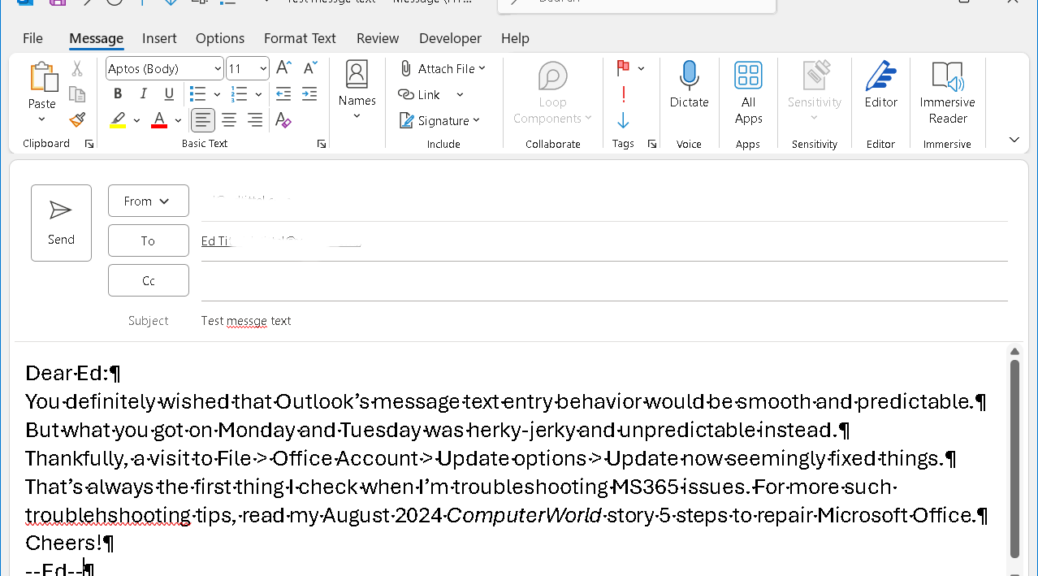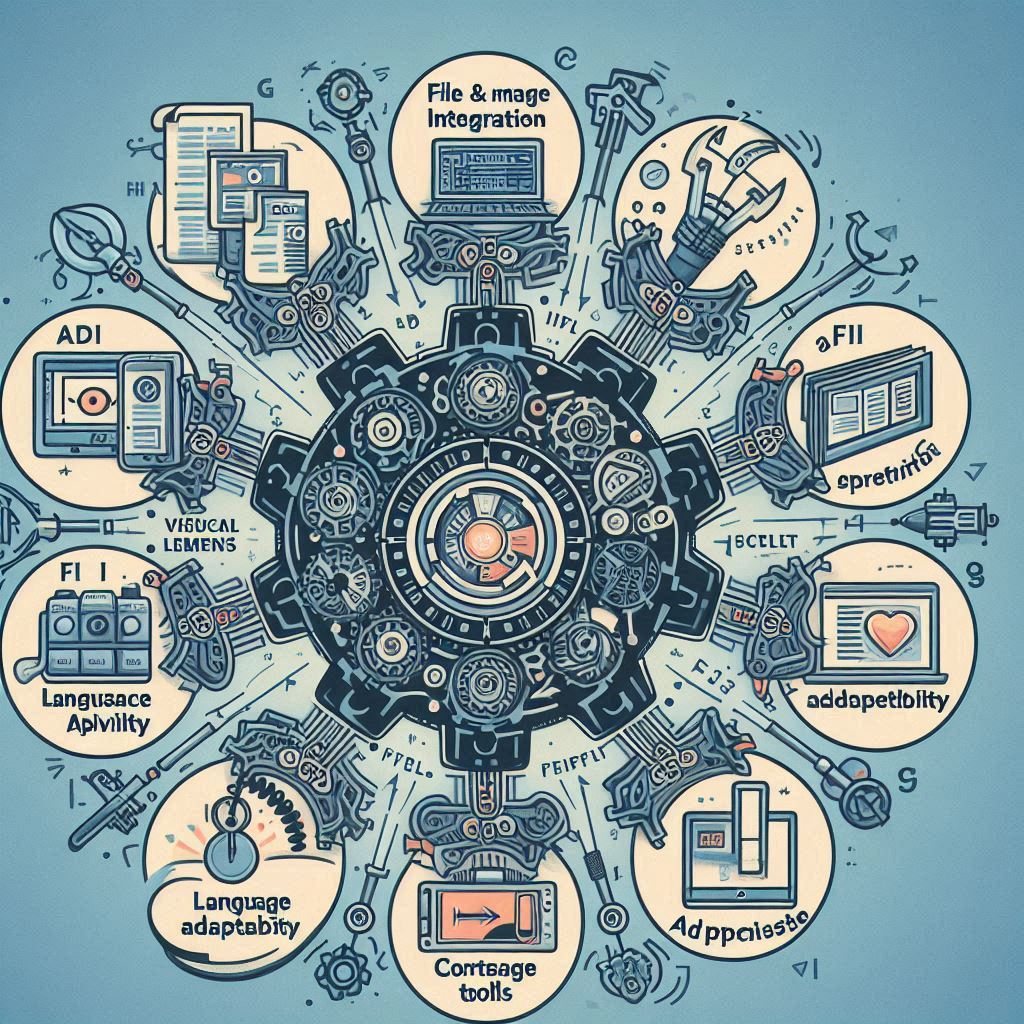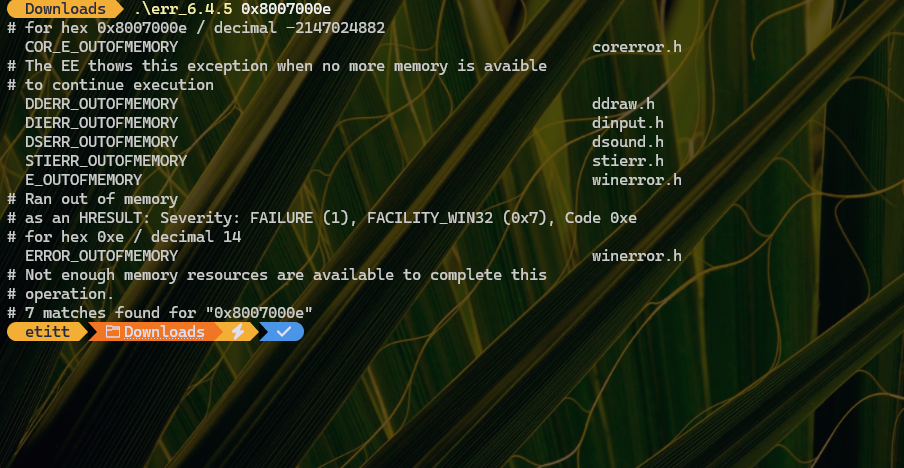There it was again when I ran WinGet upgrade –all this morning: “Installer failed with exit code: 4294967295.” I recognized this as the topic of a blog post I wrote about a year ago (March 11 2024). And sure enough, though it took the better part of 10 minutes to grind through to completion the same fix worked. If you experience the Office Update hiccup return, too, visit Settings > Apps > Apps & features > click on Microsoft 365 Apps (for enterprise in my case, YMMV by version). Then, click Quick Repair for the fix. Done!
Why Does the Office Update Hiccup Return?
You can see what the error looks like in the lead-in screencap, which shows the error message instead of a successful completion. Not to worry, you’ll get a successful outcome after working through the quick repair scenario described in the preceding paragraph. Then you’ll see something like the following instead:
After Quick Repair, the update suceeds without error.
I can only speculate about WHY this happens, but my best guess is that some auto-update interferes with the file structure of the existing Microsoft 365 Apps install. The error code, as it turns out, it turns out to represent an unmatched exit code that pops up as the Microsoft 365 Apps installer is running. There seems to be an “interesting” interaction with WinGet going on here, because the problem does not occur if you use the built-in Office updater.
If Only I Could Remember My Name
As so often happens, the same errors can pop up from time to time in Windows World. I had to chuckle because my Google search on this error code this morning reminded me of my own blog post a year ago. The nice thing about Windows errors (with tongue planted firmed in cheek) is not only that there are so many from which to choose, but that certain ones do recur occasionally. The problem — for me, anyway — lies in recognizing and remembering them. I hope this blog post helps you avoid the same entanglement.



![Pondering Intel Core Ultra Series 2 CPU Strategies [Image source: intel]](https://www.edtittel.com/wp-content/uploads/2025/03/intlcorultra-1038x576.png)








